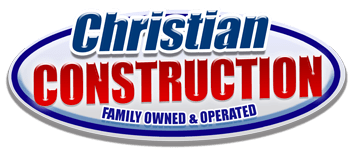Most of the time when we look into siding, we’re looking into the aesthetics, longevity, and cost. But there are so many considerations to be made. One that we often do not look into is the effectiveness of the material against pests – spiders, rats, ants, cockroaches, and any other bugs and animals that might otherwise try to invade our property.
Different types of siding offer different levels of protection against pests, and so if you’re someone that is particularly considered or deciding between more than one option, the ability of siding to protect against pests might help you determine what option is best for you.
Installation Quality Above All
Before we begin, however, it should be noted that nothing matters more than installation quality. Installation quality is what will have the most profound effect on the ability of your siding to protect against pests. When siding is properly installed, the number of gaps are minimal and pests are less likely to have access. When there are gaps or problems, it creates openings that allow pests to enter.
Types of Siding and Their Protection from Pests
Still, even the best installed siding can have pest problems, with some materials more prone to pests than others. For example:
- Wood Siding – Wood siding is particularly attractive to pests, making it the most prone to infestations of all the siding materials. Termites, carpenter ants, and wood-boring beetles are commonly drawn to wood siding. These insects can cause significant structural damage as they feed on the wood or create nests within it. Yet even beyond that, wood is more likely to have or create holes over time which may allow pests to enter.
- Vinyl Siding – Vinyl siding is several steps above wood siding, because it is not prone to decay and will not attract wood boring pests. Tight seals (with proper installation) also significantly mitigate any risks associated with vinyl siding. Still, it is possible for some pests to come in through the back of the vinyl panels, especially if there are gaps, increasing the importance of proper installs.
- Engineered Wood – Composite and engineered wood sidings are made from wood fibers and other materials, making them somewhat susceptible to pests. However, they are generally treated with chemicals that make them less attractive to insects compared to natural wood siding.
- Fiber Cement Siding – Fiber cement siding is composed of cement, sand, and cellulose fibers, making it highly resistant to pests. Termites and other wood-destroying insects do not find fiber cement appealing, making it one of the best choices for pest resistance. Still, while fiber cement siding is durable and pest-resistant, it is essential to maintain its integrity by inspecting for cracks and ensuring that the caulking remains intact.
- Metal – Metal siding, including aluminum and steel, is the least susceptible to pests. Insects and rodents cannot chew through metal, making it an excellent choice for those looking to minimize pest issues. However, it can be the most expensive, and not everyone likes the appearance.
While it doesn’t make much sense to make your siding decisions based on pests, there are so many factors at play when choosing siding that it makes sense to try to consider all the different things that may arise. If you’d like additional help deciding on siding in Staten Island, or you’d like to learn why Christian Construction’s installation team is the best in the business, please contact us today.

